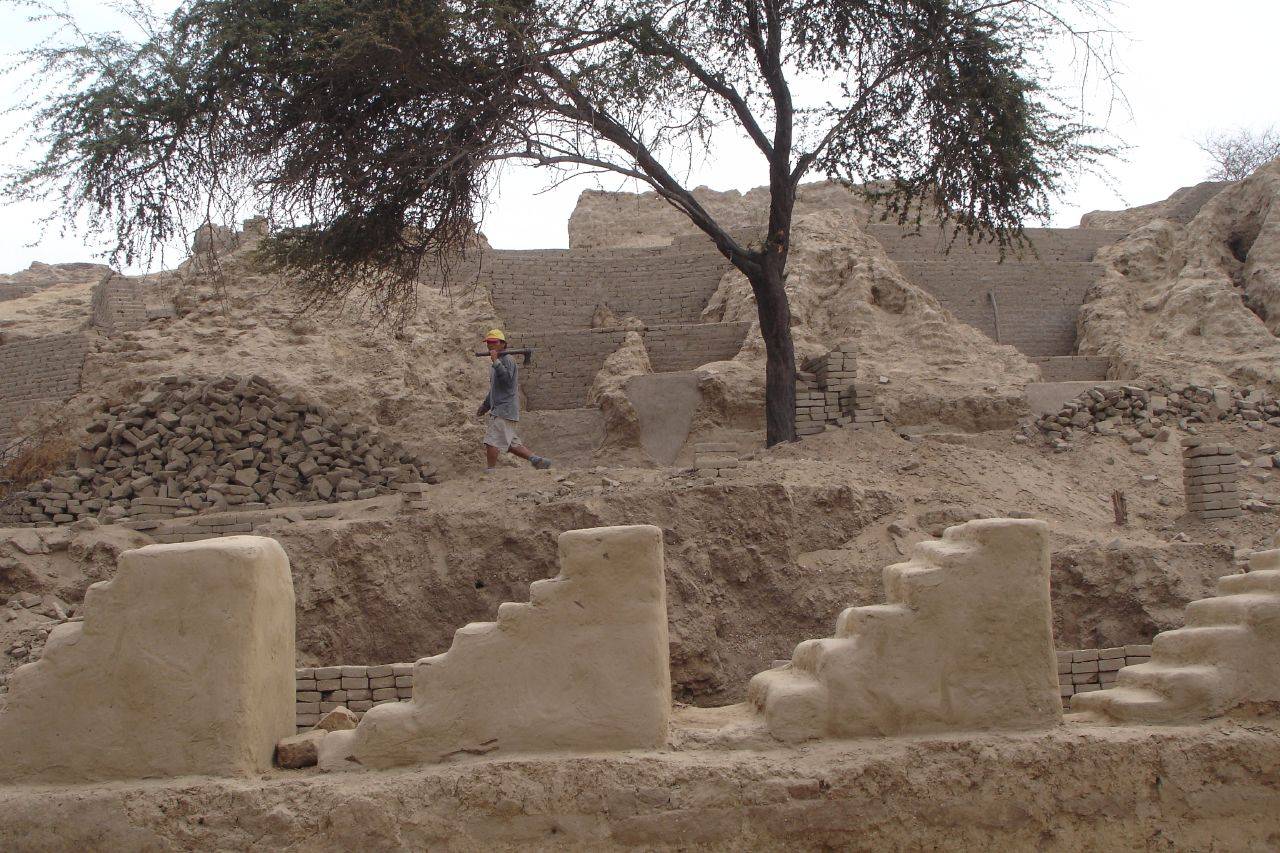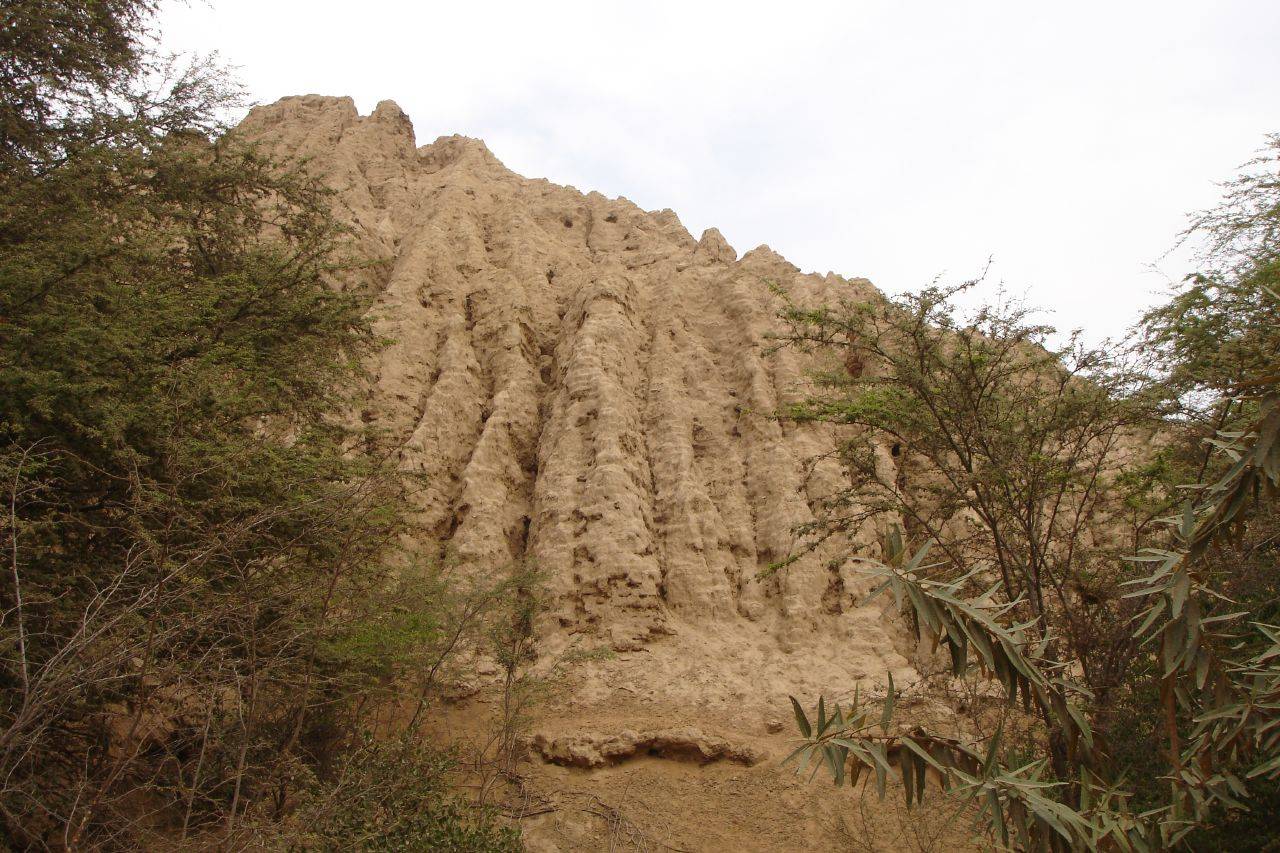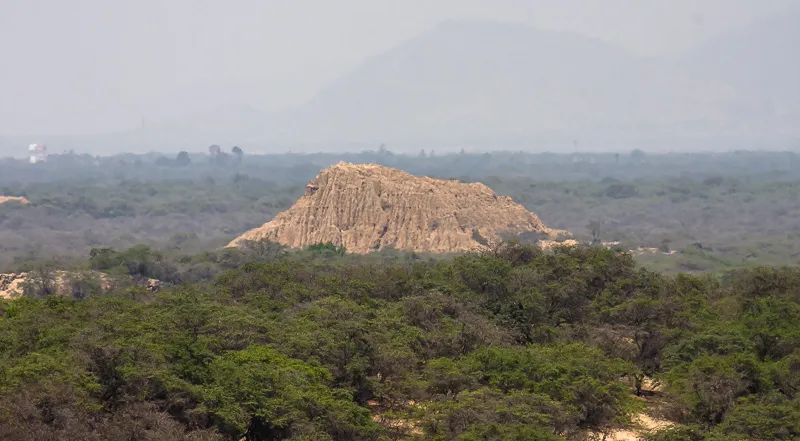Batán Grande, a historical site of monumental significance, nestles in the arid landscapes of northern Peru. Known for its rich cultural heritage, it stands as a testament to the sophisticated metalworking of ancient civilizations. The site, part of the larger Sicán National Sanctuary, is famous for its archaeological remains, including pyramids, plazas, and tombs. It offers invaluable insights into the Sicán or Lambayeque culture, which flourished from around 900 to 1100 AD. Batán Grande is a treasure trove for historians and archaeologists alike, revealing the complexities of pre-Columbian societies in South America.
Get your dose of History via Email
Historical Background of Batán Grande
The discovery of Batán Grande dates back to the early 20th century, with systematic excavations beginning in the 1970s. Renowned archaeologist Izumi Shimada played a pivotal role in unearthing its secrets. The Lambayeque culture, also known as Sicán, built this site. They were master metalworkers, known for their intricate gold and silver artifacts. Over time, Batán Grande saw various inhabitants, including the Chimú and Inca cultures.
The Lambayeque people constructed Batán Grande as a ceremonial and administrative center. It became a hub for their religious activities and governance. The site’s strategic location allowed it to thrive as a trade center, connecting the highlands and the coast. Batán Grande’s significance grew, and it became a focal point for the Sicán culture’s political and religious life.
Archaeological findings suggest that Batán Grande was not just a political center but also a burial ground for the elite. The discovery of the Lord of Sipán’s tomb nearby in 1987 highlighted the region’s importance for elite burials. This find, akin to the discovery of King Tutankhamun’s tomb, shed light on the wealth and sophistication of the Sicán elite.
Batán Grande has witnessed several historically important events. For instance, it experienced a significant fire, which some scholars believe was an act of ritual closure. This event marked the end of the Sicán culture’s dominance in the region. Later, the Chimú and Inca cultures left their marks on the site, integrating it into their respective empires.
The site’s decline began around the 14th century, possibly due to environmental changes or social upheaval. Despite this, Batán Grande remains a crucial piece of the historical puzzle, offering insights into the rise and fall of Andean civilizations. Its discovery and ongoing research continue to enrich our understanding of pre-Columbian history.

About Batán Grande
Batán Grande encompasses an area of about 46 square kilometers. It features more than 30 major pyramids, including the impressive Huaca Loro and Huaca Las Ventanas. These structures are primarily made of adobe bricks, a testament to the Lambayeque’s architectural ingenuity.
The site’s construction methods were advanced for their time. The Lambayeque people used a combination of river pebbles and adobe to create their buildings. This blend provided the necessary stability to withstand the region’s seismic activity. The pyramids’ platforms and ramps showcase the Lambayeque’s mastery of large-scale construction.
Architectural highlights of Batán Grande include its ceremonial plazas and intricate network of canals. These canals were not only functional for irrigation but also played a role in religious ceremonies. The site’s layout reflects a deep understanding of both practical and ceremonial architecture.
The materials used in Batán Grande’s construction were locally sourced. The Lambayeque culture utilized the abundant mud and clay in the region to create their adobe bricks. The use of gold and silver in artifacts found at the site indicates their expertise in metalworking and the wealth of resources at their disposal.
Despite centuries of exposure to the elements, Batán Grande’s structures have withstood the test of time. Conservation efforts are ongoing to preserve the site’s integrity. These efforts ensure that Batán Grande continues to provide a window into the past for future generations.

Theories and Interpretations
Several theories exist about Batán Grande’s purpose and significance. Most agree that it served as a religious and political center. The site’s grandeur suggests it was a place of great importance to the Lambayeque people.
Mysteries shroud Batán Grande, particularly regarding the massive fire that consumed part of the site. Some scholars theorize that this was a ritual act, symbolizing a transition of power or a response to a natural disaster. This theory aligns with the practice of ritual closures observed in other Andean cultures.
Interpretations of Batán Grande’s artifacts and structures often rely on matching them to historical records. The Lambayeque culture left no written records, so researchers use comparative analysis with other Andean cultures to draw conclusions.
Dating of Batán Grande has been carried out using various methods, including radiocarbon dating and stratigraphy. These techniques have helped establish a timeline for the site’s occupation and use. They have also aided in correlating the site’s history with broader Andean chronologies.
Theories about Batán Grande continue to evolve as new discoveries are made. Each finding adds a piece to the puzzle, helping to construct a more complete picture of the Lambayeque culture and its role in pre-Columbian history.
At a glance
Country: Peru
Civilization: Lambayeque Culture (Sicán Culture)
Age: Approximately 900 to 1100 AD
Conclusion and Sources
The information in this article has been obtained from the following reputable sources:

